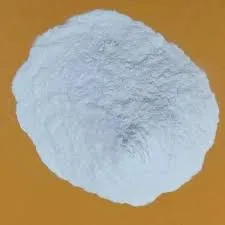
Dec . 07, 2024 07:51 Back to list
hydroxypropyl methylcellulose use
The Versatile Applications of Hydroxypropyl Methylcellulose
Hydroxypropyl Methylcellulose (HPMC) is a non-ionic, cellulose-based polymer that has gained significant attention in various industries due to its unique properties. Composed of cellulose, a natural polymer derived from plant cell walls, HPMC is modified to enhance its solubility and functionality. This article will explore the diverse applications of HPMC across different sectors, including pharmaceuticals, food, cosmetics, and construction.
Pharmaceutical Applications
In the pharmaceutical industry, HPMC plays a vital role as an excipient in drug formulations. Its use as a controlled-release agent helps to enhance the bioavailability of active pharmaceutical ingredients (APIs). HPMC can form gels in aqueous environments, which is particularly beneficial for formulating tablets. When used in matrix tablets, it regulates the release of drugs, ensuring that patients receive a steady dose over time. Moreover, HPMC is also utilized in ophthalmic solutions due to its ability to increase viscosity and enhance the ocular retention of active ingredients, thus improving patient comfort and therapeutic efficacy.
Food Industry
HPMC finds its way into the food industry as a thickening agent and stabilizer. It is used in various food products such as sauces, soups, and dressings to enhance texture and mouthfeel. Its emulsifying properties help to keep ingredients from separating, thus improving the overall quality of food products. Additionally, HPMC is utilized in low-fat and gluten-free formulations, as it can mimic the texture and binding properties of fats and gluten. This makes it an invaluable ingredient for health-conscious consumers seeking to enjoy tasty yet nutritious food.
Cosmetic and Personal Care Products
In the realm of cosmetics and personal care, HPMC's thickening and film-forming properties make it a popular choice in formulations such as shampoos, conditioners, lotions, and creams. It provides a smooth texture and enhances the stability of these products, ensuring a pleasant application experience. HPMC's ability to retain moisture also makes it a desirable ingredient in skincare formulations geared towards hydration. Furthermore, its compatibility with various formulations allows manufacturers to create innovative products that meet the diverse needs of consumers.
hydroxypropyl methylcellulose use

Construction Industry
The construction industry has also recognized the benefits of HPMC. It is commonly used as a polymer additive in cement-based products, such as tile adhesives, wall putties, and plaster. HPMC improves the workability of these materials, allowing for easier application and better adhesion to surfaces. It also enhances the retention of water, which is crucial for the curing process and overall durability of construction materials. Additionally, HPMC contributes to the flexibility and strength of mortar, making it an essential component in modern construction practices.
Other Applications
Beyond these primary industries, HPMC is employed in several other applications, including the production of biodegradable films, as a binder in powdered products, and even as a component in 3D printing materials. Its eco-friendly nature, coupled with its versatility, allows for a wide range of innovative uses.
Safety and Regulatory Considerations
One of the many advantages of HPMC is its generally recognized as safe (GRAS) status by regulatory agencies, including the FDA. This safety profile makes it an attractive option for use in food and pharmaceutical products. However, it is essential for manufacturers to adhere to established guidelines and regulations when incorporating HPMC into their formulations to ensure consumer safety.
Conclusion
Hydroxypropyl Methylcellulose is a valuable ingredient across various industries due to its multifunctional properties. Its ability to act as a thickener, binder, emulsifier, and controlled-release agent highlights its versatility and effectiveness. As industries continue to evolve and innovate, the demand for HPMC is likely to remain strong, offering numerous possibilities for product development and enhancement. With its proven safety profile and wide range of applications, HPMC stands out as a critical component in achieving functional, effective, and consumer-friendly products in today's market.
-
Versatile Hpmc Uses in Different Industries
NewsJun.19,2025
-
Redispersible Powder's Role in Enhancing Durability of Construction Products
NewsJun.19,2025
-
Hydroxyethyl Cellulose Applications Driving Green Industrial Processes
NewsJun.19,2025
-
Exploring Different Redispersible Polymer Powder
NewsJun.19,2025
-
Choosing the Right Mortar Bonding Agent
NewsJun.19,2025
-
Applications and Significance of China Hpmc in Modern Industries
NewsJun.19,2025







